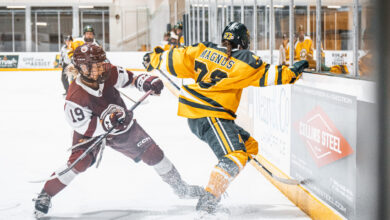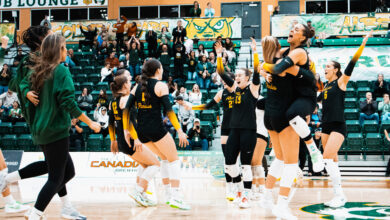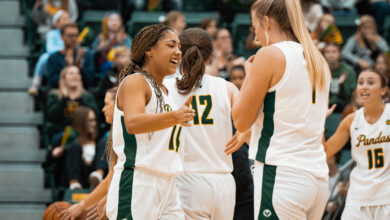U of A professor uses bodybuilding to confront patriarchy
 Supplied - David Ford
Supplied - David FordLianne McTavish never had any particular fitness goals in mind when she began exercising.
It was just a good way to counteract her scholastic schedule that didn’t involve a lot of movement when she was working towards her Master’s degree from the University of Rochester.
“I didn’t weigh myself, I didn’t care about weight loss,” McTavish said. “I liked that I was getting stronger and I liked that I could do really tough classes … I liked the feeling of getting stronger.”
After graduating with her PhD in 1996 with a specialty in 17th century visual culture, she eventually became a professor at the University of Alberta in 2007 in the Faculty of Arts, Department of Art and Design.
Edmonton is where McTavish hired a personal trainer for the first time, and began lifting and squatting heavier than she ever had before. This learning experience solidified her friendship with her trainer, Jill Kovacs, who competed in bodybuilding competitions. McTavish began to attend her friend’s competitions, where she encountered figure shows for the first time.
“I would see her shows in bodybuilding but I would also see the figure shows and I thought they were terrible,” McTavish said. “I thought they were deliberately designed to counteract the transgressive potential of hypermuscular women.”
While she admitted that she still believes this is true, in 2010 she decided to compete in a figure show to learn about the subculture of bodybuilding.
“I thought I could learn about it by doing it instead of judging it based on what I saw,” McTavish explained. “It was an experiment.”
Within bodybuilding competitions, there are several varying categories. Bodybuilding competitions have the goal of very large, visible muscles, with different poses on stage to highlight certain groups. Figure competitions, which McTavish competed in, focus on muscle development, but emphasize defined shoulders and quads, with a smaller waist. Instead of poses, the athletes stand, and do quarter turns to show judges the full effect. And it’s all done in high heels and a bikini.
Before competing, McTavish admitted that she had never identified with her body or appearance, making the intense focus on her looks a shock. She found herself dying her hair blonde, tanning and manicuring her nails to fit into the figure aesthetic, on top of the strenuous physical training, dieting and weight loss needed to compete.
“I always identified as an academic, and I understood myself to be smart,” she said. “It’s not that I didn’t care what I looked like, but I put amazingly little time and effort into what I looked like and I didn’t care what men or women thought about my appearance. But when I started doing a figure show, I had to care. I had to think about what it meant to look a certain way.”
While she never found herself worrying about her appearance before, McTavish did find herself focusing on her body, hard to avoid when on a five month diet before the competition with the goal of shedding fat to reveal muscle. She said that training for the competition helped her to understand more how women’s self-esteem can be affected by being told that their value comes directly from their appearance.
“The bad part was that I actually kind of did care (about my appearance) at the height of it,” McTavish admitted. “I really did care what I looked like and cared too much. It didn’t last long and it didn’t last long after the show to go back to myself.”
McTavish will not compete in another competition, but she now has a book published on her experiences and explorations of being a figure competitor, called _ Feminist Figure Girl: Look Hot While You Fight the Patriarchy_.




